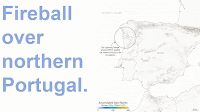The Earth will reach its aphelion, the furthest point in its orbit from the Sun, a distance of 1.017 AU (1.017 times the average distance between the Earth and the Sun) or 152 099 968 km, at 5.06 am GMT on Friday 5 July 2023. The Earth's orbit is slightly eccentric and slightly variable, leading to the distance between the Earth and the Sun varying by about 3.4% over time, reaching aphelion early in July each year and perihelion (the closest point on its orbit to the Sun) early in January. The exact distance at aphelion and perihelion each year varies, with this year's aphelion being slightly closer to the Sun than last year (2023), when the Earth reached 152 290 632 km from the Sun on 5 July, but slightly further from the Sun last year, when it will only reacha distance of 152 087 774 km.
This is counter intuitive to inhabitants of the Earth's Northern Hemisphere, who often assume that the Earth is closest to the Sun in midsummer, when in fact it is at its furthest away. This is because the tilt of the Earth plays a far greater role in our seasons than the distance from the Sun, and the Northern Hemisphere has just passed its Summer Solstice, i.e. the point at which the North Pole was pointing as close to the Sun as it ever gets, so that the Northern Hemisphere is currently getting much more sunlight than the Southern. The Earth's surface receives about 7% less sunlight at aphelion to at perihelion, but this is far less than the seasonal variation caused by the tilt of the Earth (23% in each hemisphere).
See also...









%20(1)%20(1).png)